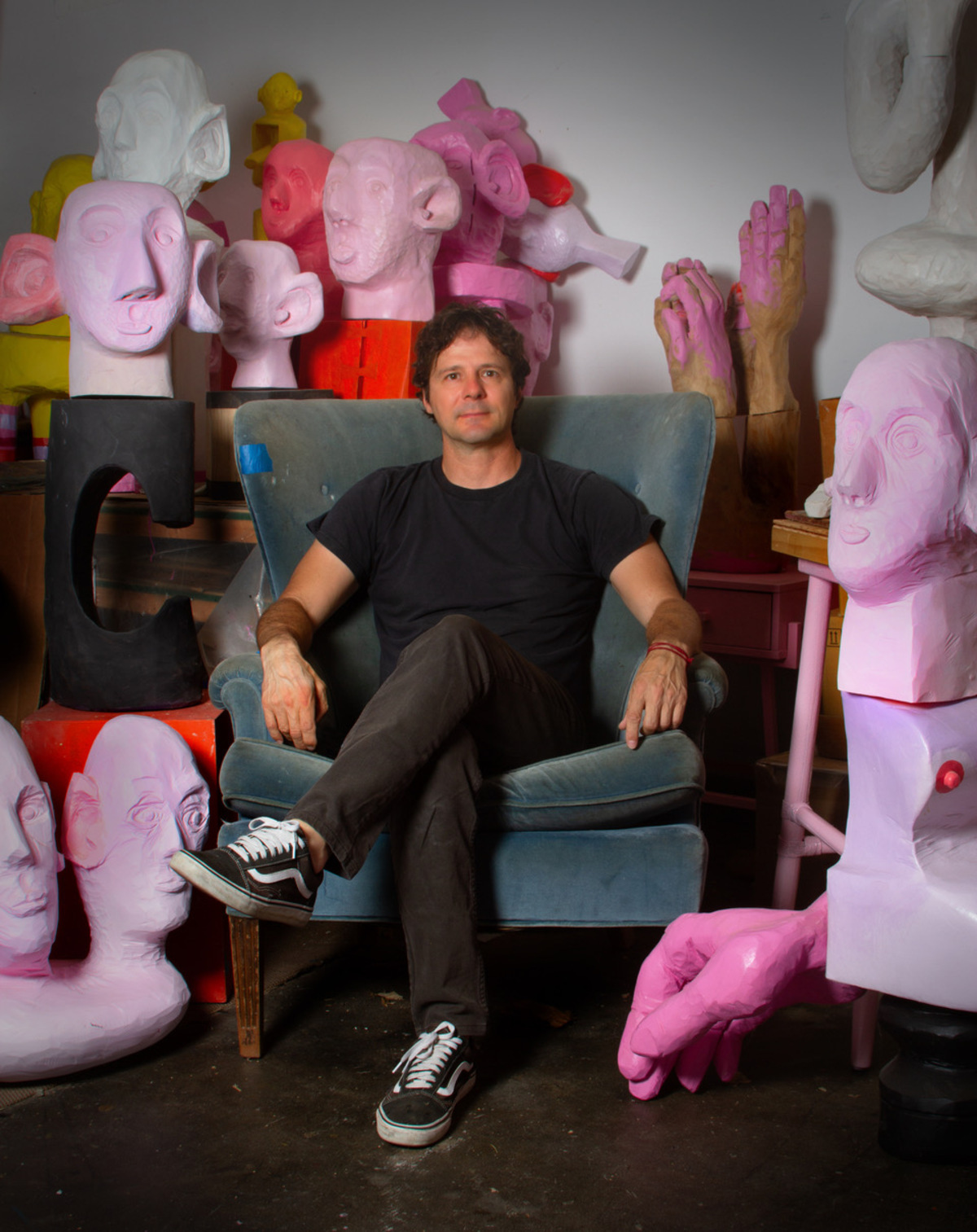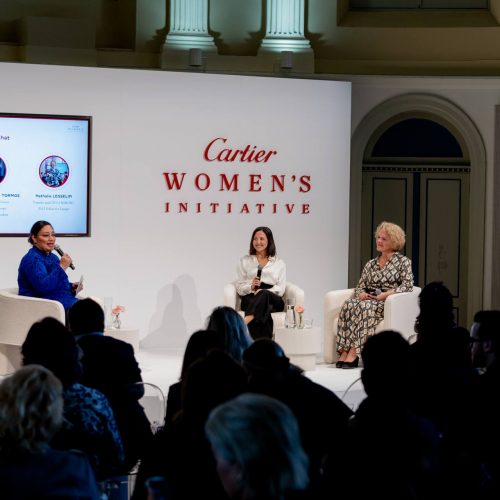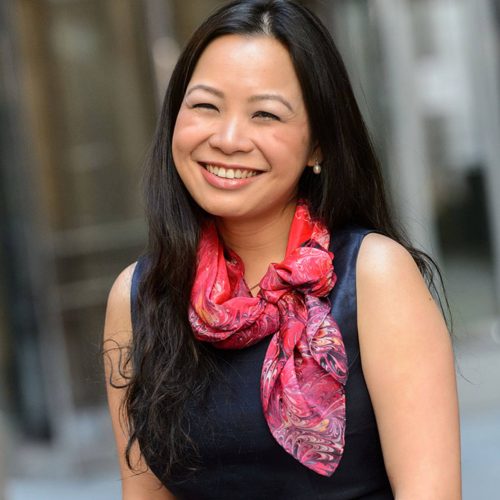Merger of the Artistic Flux | Interview with James Gilbert
From sculpture to performance art, the LA-based artist James Gilbert envisions a fascinatingly unique world through his art. We asked Gilbert about his experiences before and after creation, and his derivation points.
To receive the Luxiders Newsletter, sign up here.
The Los Angeles-based multifaceted artist James Gilbert might be one of the purest transformative talents in art: What the artist takes as an inspiration to produce an artwork always comes from a merger of ‘everything’. Merging the moments gets more and more fascinating with Gilbert’s touch, as he interprets the materials to use in a way that matches Gilbert’s sensualistic, natural, and meaningful process of creation. On the other hand, what James Gilbert presents is beyond an artistic flux, but a milestone, a witness, and a commenter to the times we have been through and currently experiencing. The artist states “For me, the role of art is only powerful in shaping collective consciousness if we are actively engaged, paying attention and willing to think deeply and then behave accordingly,” when he is asked about his perception of art. Here is a heart-stopping interview with James Gilbert about his art and societal aspects of it.
Luxiders Magazine (L)
James Gilbert (JG)
L: Your work is often described as transcendent, forging a connection between the visual and the intangible. Could you shed light on the sources of your inspiration?
JG: I don’t question what interests me. I want to combine as many potentially dissimilar ideas as opportunities for discussion in my practice. That is how I move through my days – collecting as much information as possible and basing my thinking and actions on them. I believe my work has to behave this way too - moments and clues that deserve conversation. If I can sort out meaning too quickly in a work it does not interest me enough to make it. However, ideas that linger and require more investigation – those are the ones I pursue visually.
L: How did you meet with art? Do you remember an exact moment or affair that made you realize that you will choose the path of art in your life?
JG: I wasn’t aware of the term "artist" or the concept of what that meant. I just recall distinctly thinking that I wanted to make things and that I had an interest in building objects, environments to occupy within, music, and a good narrative story. By the time I went to university, I’d realized I could make work about topics that were important to me, combining ideas and philosophies that I wanted to discuss and explore. That is when it got exciting. Letting go of compartmentalizing individual journals, some just for drawings and others for conceptualizations and writings. When I merged everything into one journal I could see the emergence of an exciting ricochet of topics.
L: As a multifaceted artist who produces art from sculptures to performances, installations to videos; were there derivatives that made you explore your interest and talent to create art in different disciplines?
JG: I like moments. I like the moments that shape ideas, actions, and behaviors of people and communities. I’m not necessarily referring only to significant life events; there can also be small and swift interactions that have impactful meaning. Sorrow, joy, laughter, agony – nothing feels off limits, if it is worth thinking and talking about, it is applicable to my work. The time spent studying music and literature and working in theatre and film, made me realize the value of tangible results, grounded by history, science, and the observation of human nature. The work has to be about something.
L: We observe that material selection holds quite a vital place in your art. You state that you prefer raw materials due to their metaphorical meaning. Can you tell us more about your perception of the relationship between artwork and materials?
JG: I consider raw materials in the context of the way we would describe the work itself. That is the very reason I feel it is necessary for me to be able to move between materials – there is not any one that I would hesitate to use if I felt it added to a work, conceptually. The materials serve the idea, which is always the most important. Raw wood, for instance, has flaws and imperfections. It also has history and age. When I make a wood carving that is about ancestry or heritage, I feel the words I use are equally appropriate – who among us does not have flaws or history that define our behavior? When I sew plastic soft sculptures, words like manufactured, artificial, and mass-produced resonate. If I am dyeing and sewing textiles, that is a descriptive physical labor. When creating a rammed-earth wall, one of the oldest building techniques, I want there to be an option for the viewer to really think what the material means and how it imposes certain interpretations on the work. For instance, if that same wall was made of stone or chocolate bars, it would have an entirely different meaning, conceptually.
L: Your art includes issues like racial injustice, historical issues, political divisiveness, and more…How do you envision the role of art in shaping individual and collective consciousness?
JG: First of all, I bravely hope that audiences would want to engage. We easily live in a time where TLTR [too long to read] takes precedence over the completed novel. I value research and feel a responsibility that my work asks the right questions without exposing the hand of the author. I believe that cultural heritage, artifacts, and art (in all forms) exist because we want to better understand our time and perhaps leave lessons for future generations. This requires a historically reliable interpretation to understand the context in which those objects were created. However, there can be danger in interpretation too. For me, the role of art is only powerful in shaping collective consciousness if we are actively engaged, paying attention, and willing to think deeply and then behave accordingly.
L: In today's tumultuous times, do you believe artists have a responsibility to address pressing societal issues?
JG: Yes, and I also believe that no one wants an opinion thrust upon them. I utilize something that I call my visual defense mechanism, meaning: I allow myself to take on difficult and complex topics but present them in a way that softens the entry point of the conversation through the use of lighthearted color palettes, form, and humor. Look at my titles too, I do spend time writing them, in hopes they reflect a balanced perspective.
L: “Honoring the sorrow” and interpreting it with humor is such a characteristic way to perceive the world. Looking at your works, it is also visible that you have a strong, characteristic style of your own. How did this personal style develop for you and did you have any inspirational figures or elements when it was developing?
JG: I like this question because it is a difficult one to answer. Perception is all we have. I always like thoughtful artists who are also playful or respectful in their approach. I think of honoring the sorrow with humor in terms of an imagined conversation with someone I don’t know – I wouldn’t start it with closed-ended statements or heavy facts, I would lose the audience too quickly. Instead, I lead with an anecdote or story that organically builds and develops, inviting a reciprocal exchange of ideas. For me, sorrow and humor come from the same place, they are both emotional responses. Though, their perception is an outlook determined by the person that you are and the world in which you aspire to live. Style is how you move through the world. I allow my work to be perceived as full of contradictions. It is precise but intentionally imperfect. It is complex, serious but efficient.
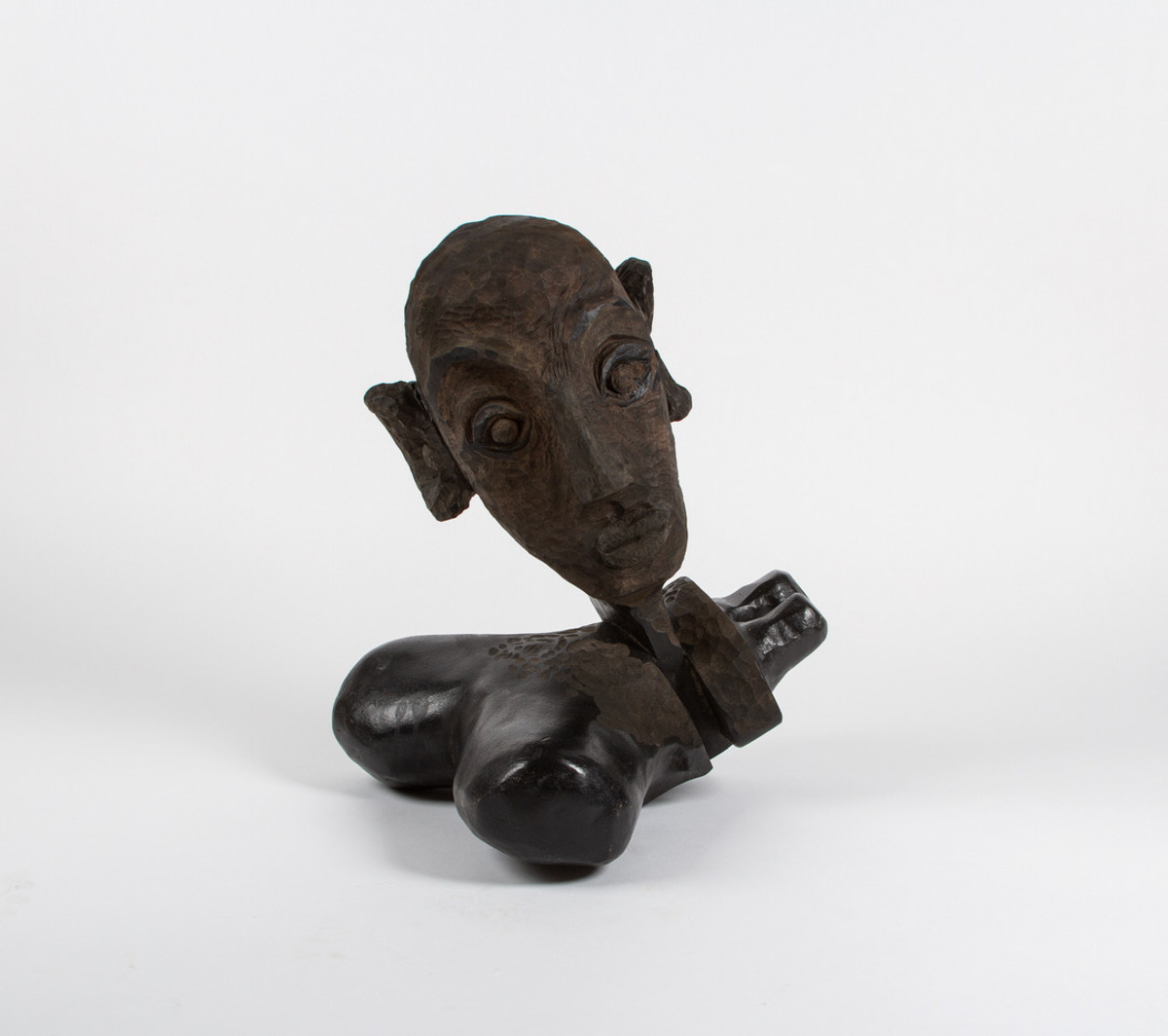
For the First Time I Really Saw Beyond the Appearances, 2017
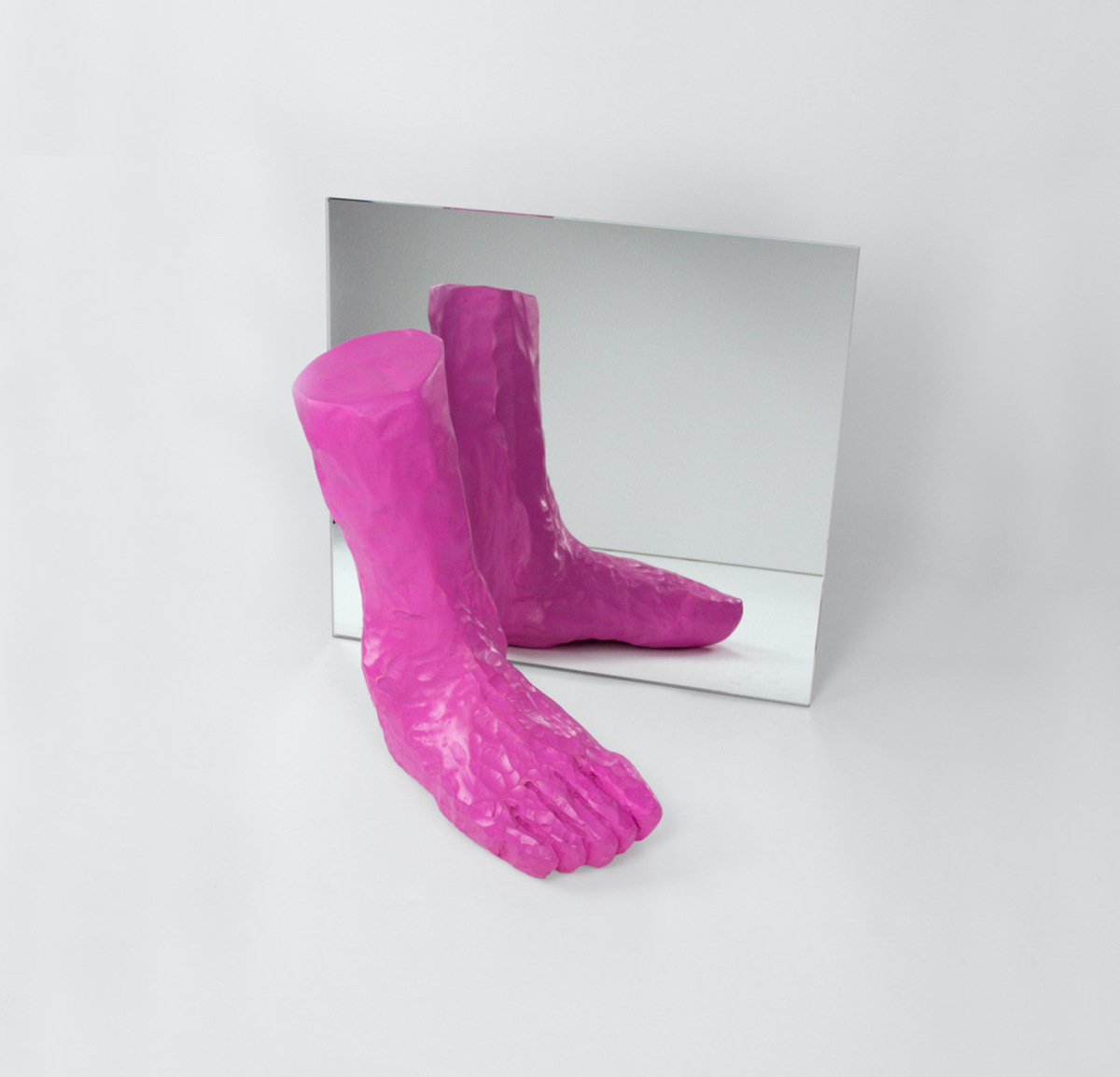
A Mystery, Fetish, Neurosis and Fragmentation of Ourselves, 2017
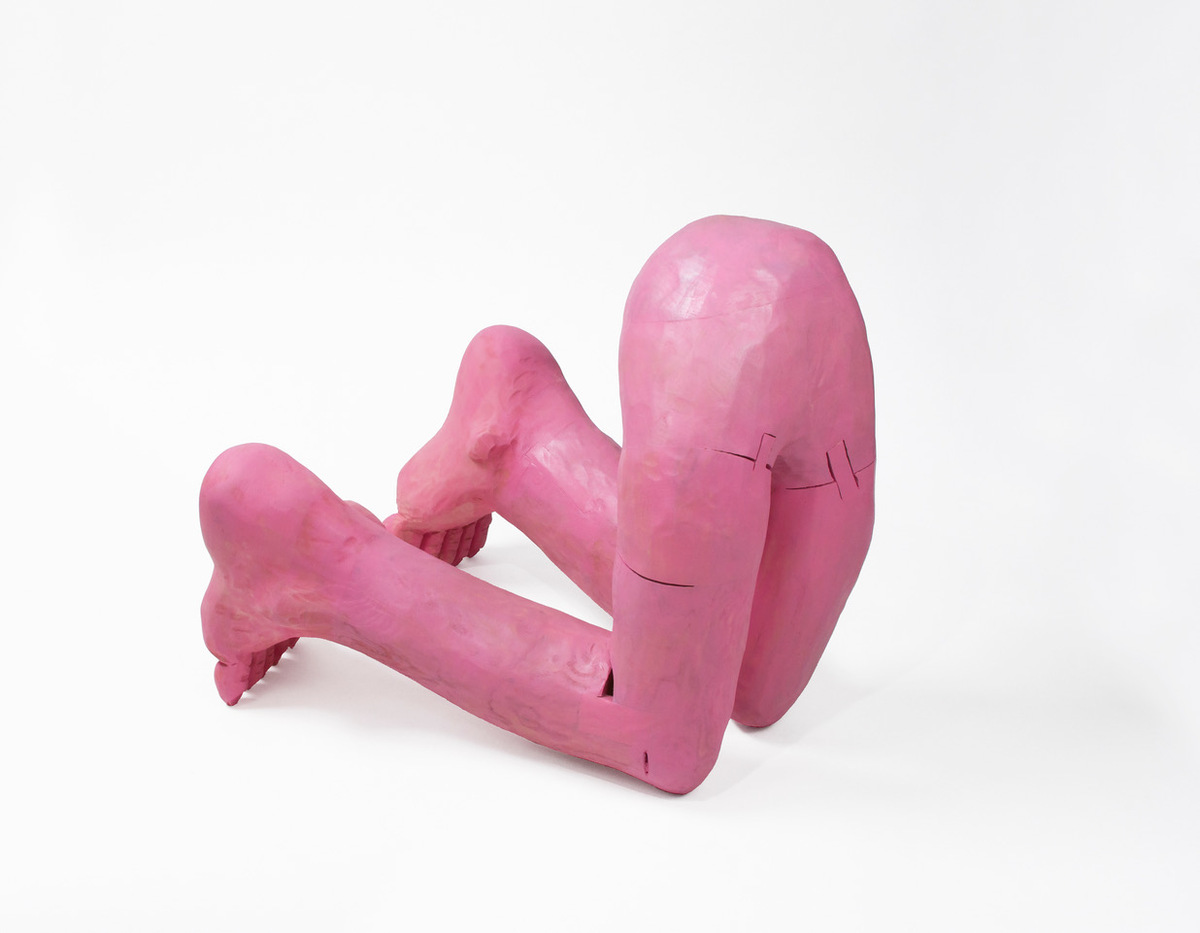
Kneel, 2020, wood, stain, metal, pigment, wax, 20 x 22 x 22 inches
L: Can you please tell us about some of your artworks that we love: What was the inspiration, the message you wanted to deliver, how was the process of creating them, and how would you review the work in contemporary circumstances?
L: For the First Time I Really Saw Beyond the Appearances, 2017
JG: After making a series of large installations about the intentional destruction of cultural heritage and symbolically significant architecture I wanted to move the theme to smaller objects. There is an archeological history of objects that depict fertility, fetishes, symbolic rituals, or entertainment to name a few. They carried meaning for the maker and the community. By means of cultural destruction heritage can be lost and therefore, individual identity is also lost. I have been making fictionalized objects that could potentially function in similar ways of lost artifacts, they defy accurate use or interpretation but still, we anticipate that there was inherent reason for them to exist, we just need to find it. Whereas, we learn more about our history and ourselves.
L: A Mystery, Fetish, Neurosis and Fragmentation of Ourselves, 2017
JG: When I was around four or five years old I was always happy to find full-length mirrors in clothing department stores where I could position myself to one side of the mirror with half of my body in front and half behind the mirror. Moving my arms in legs in front of the mirror would have a deceptive but playful symmetry similar to a marionette dancing or riding an invisible bicycle.
I liked the perception of reflecting a movement and behavior. I see this as a duplication of self, a reflection of personal trust and identity – of who we are or perhaps who we present ourselves to be. It was always meant to be shown on the ground, hidden in a corner of an exhibition space.
L: Kneel, 2020, wood, stain, metal, pigment, wax, 20 x 22 x 22 inches
JG: This one started with a different intention. As I was working on the feet I turned them to have the bottoms facing upward. It was at night in my studio and there were only two small lights on in my studio a street light shining in through a window. The upturned feet felt so vulnerable. At this time there was so much going on politically, racially, and with worldwide health. I recognize that there is not much difference in posture between a moment of quiet contemplation or a gesture of compliance and surrender. I made a new sketch at that moment and left my studio for the night.

“How Much Earth for Sale?”, 2022

“One Blank Round”, 2015
L: “How Much Earth for Sale?”, 2022
JG: I wanted to use one of the oldest building techniques, rammed earth (compacted earth to create a cement-like structure) to examine land rights between citizens and their own government. I referenced an 1823 landmark United States case where the Supreme Court helped create a monopoly for the US government to acquire Native American lands at the lowest possible cost. I view this as a monument to those we disagree with – earth divides a home, the entrance and exit are blocked and there is no way to access to make the home usable. The home frame replicates that of a Monopoly board-game piece and the lines of the home are painted in a warning and safety color orange. A house divided is a theme that can easily be recognized across many topics we address daily.
L: “One Blank Round”, 2015
JG: I don’t question what interests me so everything I read in the news, books or listen to on podcasts can become ideas to explore further – even complex and difficult topics. I had been reading about a man who was sentenced to capital punishment. Where he lived utilized lethal injection but he wanted a firing squad which had been outlawed. His choice was to draw the most interest in his case as possible. One account I read about firing squads is that multiple people with guns fire with only one gun containing a real bullet and the remaining will have blank bullets which do not cause harm. This leaves some ambiguity of who fired the fatal shot. While on appearances this could only be about the debate surrounding capital punishment but I also think it is the harshest discussion around human psychology and how we try to construct justifications and methodology for our behavior.
L: What are the struggles that you face the most when creating art?
JG: Patience. But I am hopeful for a larger conversation.
L: Do you have any upcoming projects that you would like to share with us?
JG: I am working on a project based on ancestry that incorporates sculpture, kinetics, and sound. Another project in the works for the late fall will be an installation also about ancestry, a re-interpretation of heirlooms and their associated meaning in the context of quickly disposable retail.

